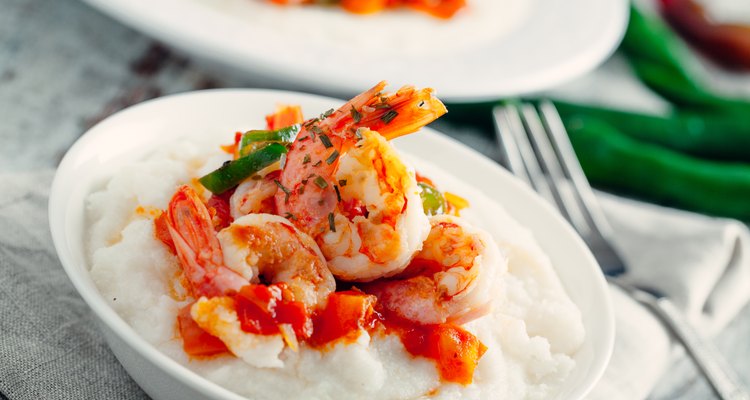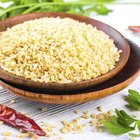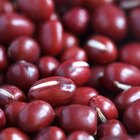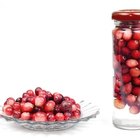
svariophoto/iStock/Getty Images
The quintessential Southern food known as hominy refers to dried kernels of white or yellow corn that have been soaked in lye to remove their bran and germ layers. This process removes much of the natural fiber found in corn. Manufacturers grind hominy to the consistency of coarse sand to create hominy grits, which are sold in regular, instant or quick-cooking varieties.
Fiber Content
Even after the fiber-rich bran and germ layers of corn kernels are removed to make hominy grits, the grits still contain a significant amount of fiber. A 1/2-cup portion of dry white hominy grits has 3.6 g of fiber along with 256 calories, and the same amount of dry yellow hominy grits contains 4.2 g of fiber and 250 calories before cooking.
Considerations
Although hominy grits don’t meet the definition of 5 g or more of fiber per serving for high-fiber grains and cereals, they do fit the criteria of 2.5 to 4.9 g for good fiber sources. Children need at least 10 g of fiber plus an additional gram of fiber per day for each year of their ages. A 4-year old boy needs 10 g plus 4 g, or 14 g of fiber while his 12-year old sister should eat at least 22 g of fiber daily. If you’re a woman, you need a minimum of 30 g daily until age 50 and 21 g a day after that. Men require at least 38 g of dietary fiber a day through age 50, when their requirement drops to 30 g daily. A ½-cup serving of yellow hominy grits delivers about 30 percent of the preschool boy’s daily fiber requirement, but only 11 percent of his 30-year old father’s daily recommended intake.
Serving Tips
Serve hominy grits as a side dish or a breakfast cereal, or use them in baked goods, such as breads and muffins. Sprinkle 2 Tbsp. of blanched almonds on top of your cereal to add 1.8 g of dietary fiber or mix hominy grits with half of a chopped, unpeeled medium apple that delivers 2.2 g of fiber. When baking with hominy grits, you can increase the fiber content of breads and muffins by replacing half of the regular wheat flour with whole wheat flour.
Benefits
Corn and corn products such as hominy grits contain both soluble and insoluble dietary fiber. Soluble fiber dissolves in water within your intestines to create a gel-like substance that helps control the amount of cholesterol and glucose in your blood, thus lowering your risk factors for cardiovascular disease and diabetes. Insoluble fiber increases the bulk of your stools and softens them, so you have regular bowel movements without straining.
Related Articles

How Much Whole Grain Should You Eat a ...

Children's Clothing of the 1800s
Old Fashioned Oats in Place of ...

How to Cook Steel-Cut Oats in a Slow ...

Questions to Ask a Divorced Man

Nutrition Value of Corn Meal

How to Size Children's Socks

Children's Clothes in the 1600s

Korean vs. American Clothing Sizes for ...

How to Cook Dry Hominy
How to Cook Old Fashioned Oats in the ...

How to Cook Penne Rigate Noodles in the ...

How to Make Lentil Flour

What Are Yellow Grits?

Bulgur Vs. Farro

Nutrition Information for Adzuki Beans

How to Make Cranberry Juice from Fresh ...

How to Clean Khakis

How to Cook Hu Tieu Noodles

School Uniforms in the 1940s
References
Resources
Writer Bio
Sandy Keefe, M.S.N., R.N., has been a freelance writer for over five years. Her articles have appeared in numerous health-related magazines, including "Advance for Nurses" and "Advance for Long-Term Care Management." She has written short stories in anthologies such as "A Cup of Comfort for Parents of Children with Special Needs."
Photo Credits
svariophoto/iStock/Getty Images